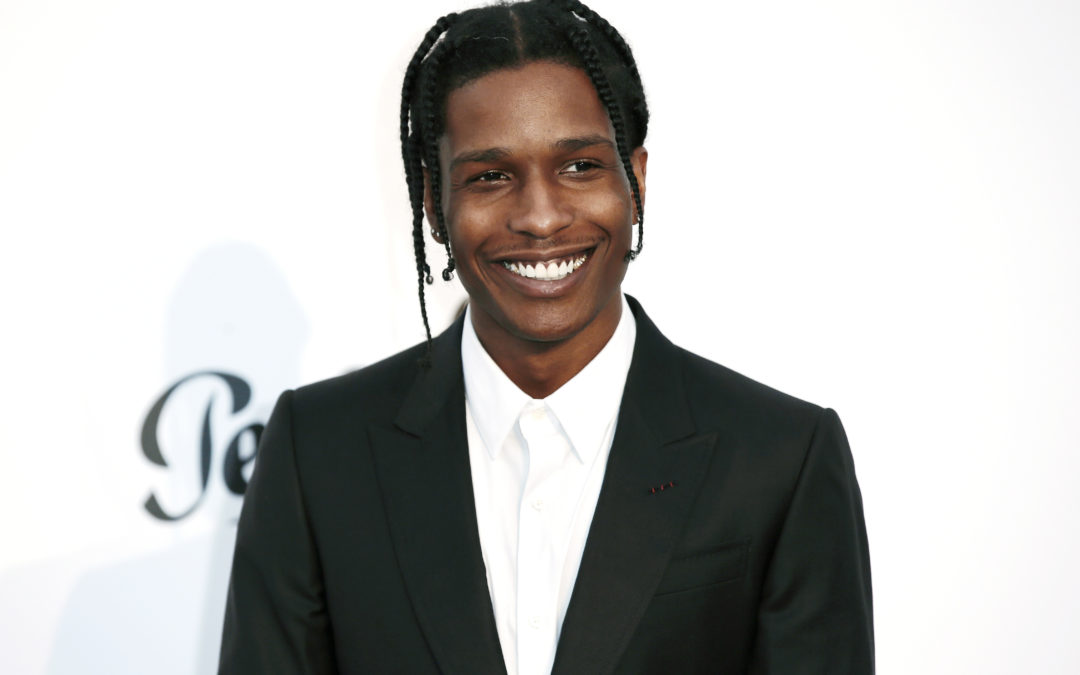
by Jonathan P-Wright | Oct 4, 2024 | Latest, Music News, New Music Alert |
Image credit: Andrea Raffin / Shutterstock.com
In the ever-evolving landscape of music, artists often find themselves grappling with the intricate balance between creative expression and the demands of a rapidly shifting industry. One such artist who has recently garnered attention for his meticulous approach is the acclaimed rapper, ASAP Rocky. Known for his boundary-pushing sound and unapologetic lyricism, Rocky has been candid about the delays surrounding the release of his highly anticipated album, “Don’t Be Dumb.” In a recent interview, the 35-year-old artist shed light on the reasons behind the postponement, attributing it to his unwavering commitment to perfection.
The Pursuit of Artistic Excellence
ASAP Rocky’s dedication to his craft is undeniable, and his pursuit of artistic excellence has become a hallmark of his career. During the interview, he candidly acknowledged that his perfectionist tendencies have played a significant role in the album’s delay. “I’m a perfectionist, and I think sometimes that’s my own worst enemy,” Rocky confessed, highlighting the double-edged nature of his unwavering standards.
The rapper’s meticulous approach extends beyond the recording studio, as he strives to explore every conceivable avenue and possibility. “I like to keep revising and editing, pushing things to the limit,” he explained, underscoring his relentless pursuit of refinement. This unwavering commitment to his art has undoubtedly contributed to the unique sonic landscapes and thought-provoking narratives that have defined his discography.
Leaks and Clearance Hurdles
While Rocky’s perfectionism has played a pivotal role in the album’s delay, he also acknowledged the impact of external factors. “There were different reasons why, mainly being leaks and clearance stuff,” he revealed, shedding light on the challenges that artists often face in the modern music industry.
Leaks have become an all-too-common occurrence, threatening the artistic integrity and commercial viability of an album. Rocky’s decision to withhold tracks that have been prematurely released demonstrates his commitment to preserving the intended experience for his fans. Additionally, the intricate process of securing clearances for samples and collaborations can pose significant obstacles, further contributing to the delay.
A Unique Rollout Strategy
Despite the setbacks, ASAP Rocky has embraced a unique approach to the rollout of “Don’t Be Dumb.” Last month, he released the single “Highjack,” which addressed rappers who have allegedly appropriated his signature flow and even made veiled references to his wife, Rihanna, and her rumored involvement with Drake.
Speaking to Apple Music’s Zane Lowe, Rocky declared that the release of “Highjack” should be interpreted as a sign that “the real is back.” This bold statement not only reignited anticipation for the album but also served as a reminder of Rocky’s unwavering authenticity and willingness to confront the industry’s complexities head-on.
Exploring New Sonic Territories
ASAP Rocky’s commitment to pushing boundaries extends beyond the lyrical realm, as he continues to explore uncharted sonic territories. In his conversation with Zane Lowe, Rocky teased the album’s aesthetic, stating, “Not only that, it’s just we coming with a whole new aesthetic on everything, especially with German expressionism and the whole ghetto futurism GR1M thing. So that’s just what the sound sounds like and whatnot. The sonics of it.”
This tantalizing glimpse into the album’s sonic landscape promises a departure from conventional hip-hop conventions, further solidifying Rocky’s reputation as an artistic trailblazer. By embracing unconventional influences and blending them with his unique perspective, Rocky continues to redefine the boundaries of contemporary music.
Fan Anticipation and Leaked Tracks
The anticipation surrounding “Don’t Be Dumb” has reached fever pitch, fueled in part by the leaks that have surfaced online. One such track, “Tailor Swif,” garnered significant attention, prompting Rocky to release a snippet of the music video with the caption, “SINCE U DUMMIES LEAKED IT ALREADY,” on the social media platform X (formerly Twitter).
While leaks can be frustrating for artists, Rocky’s candid response demonstrates his ability to adapt and engage with his fans in a genuine manner. By acknowledging the leak and offering a glimpse into the accompanying visuals, he not only embraces the reality of the modern music landscape but also reinforces his connection with his dedicated fanbase.
Addressing Controversies and Rivalries
In addition to the album’s creative elements, ASAP Rocky has also addressed the controversies and rivalries that have emerged within the hip-hop community. DJ Kast One, who has had the opportunity to hear the album, suggested that Rocky’s lyrics would cement his position on Drake’s list of enemies, alluding to the ongoing tension between the two artists.
While the nature of these rivalries remains speculative, Rocky’s willingness to confront them head-on through his music is a testament to his fearlessness and authenticity. By addressing these issues directly, he not only solidifies his artistic integrity but also positions himself as a voice of truth within an industry often shrouded in controversy.
Embracing Technological Advancements
In an era where technology has become an integral part of the music industry, ASAP Rocky has embraced the opportunities presented by emerging platforms. Recently, he announced his foray into the world of non-fungible tokens (NFTs) with his first-ever NFT collection.
This innovative move not only demonstrates Rocky’s adaptability to the ever-evolving digital landscape but also opens up new avenues for fan engagement and artistic expression. By leveraging the power of blockchain technology, Rocky can offer his fans unique and exclusive experiences, further solidifying his connection with his dedicated following.
Collaboration and Artistic Synergy
While “Don’t Be Dumb” is undoubtedly a showcase of ASAP Rocky’s singular vision, the album also promises to feature collaborations with other influential artists. One such collaboration that has garnered significant attention is the track “Ruby Rosary,” which features the acclaimed rapper J. Cole.
Collaborations have long been a hallmark of Rocky’s discography, allowing him to explore new creative territories and forge artistic synergies with like-minded individuals. By surrounding himself with talented peers, Rocky not only broadens his creative horizons but also taps into the collective energy and expertise of the music community.
Industry Partnerships and Endorsements
Beyond his musical endeavors, ASAP Rocky has also forged strategic partnerships and endorsements within the industry. Reports suggest that he and his wife, Rihanna, attended a party thrown by Drake, hinting at the potential for future collaborations or reconciliation between the two artists.
These industry connections not only showcase Rocky’s influence and standing within the music community but also open up possibilities for future collaborations and cross-promotional opportunities. By leveraging his relationships and cultivating a diverse network, Rocky positions himself as a versatile and influential figure in the ever-changing music landscape.
Fan Engagement and Authenticity
Throughout his career, ASAP Rocky has maintained a deep connection with his fans, a bond that transcends the confines of his music. His candid approach to addressing delays, leaks, and controversies resonates with his audience, fostering a sense of authenticity and transparency.
By inviting his fans into his creative process and sharing the challenges he faces, Rocky not only builds trust and loyalty but also reinforces the notion that his art is a collaborative effort, shaped by the collective experiences and perspectives of his dedicated following.
Conclusion
In the ever-evolving landscape of contemporary music, ASAP Rocky’s unwavering commitment to perfection and artistic integrity has solidified his position as a trailblazer. While the delay of “Don’t Be Dumb” may have tested the patience of his fans, Rocky’s candid explanation and unwavering dedication to his craft have only heightened the anticipation surrounding the album’s eventual release.
As he continues to push boundaries, embrace technological advancements, and forge strategic partnerships, Rocky’s influence extends far beyond the confines of the recording studio. His willingness to confront controversies head-on and engage with his fans in authentic ways has cemented his status as a voice of truth and authenticity within the industry.
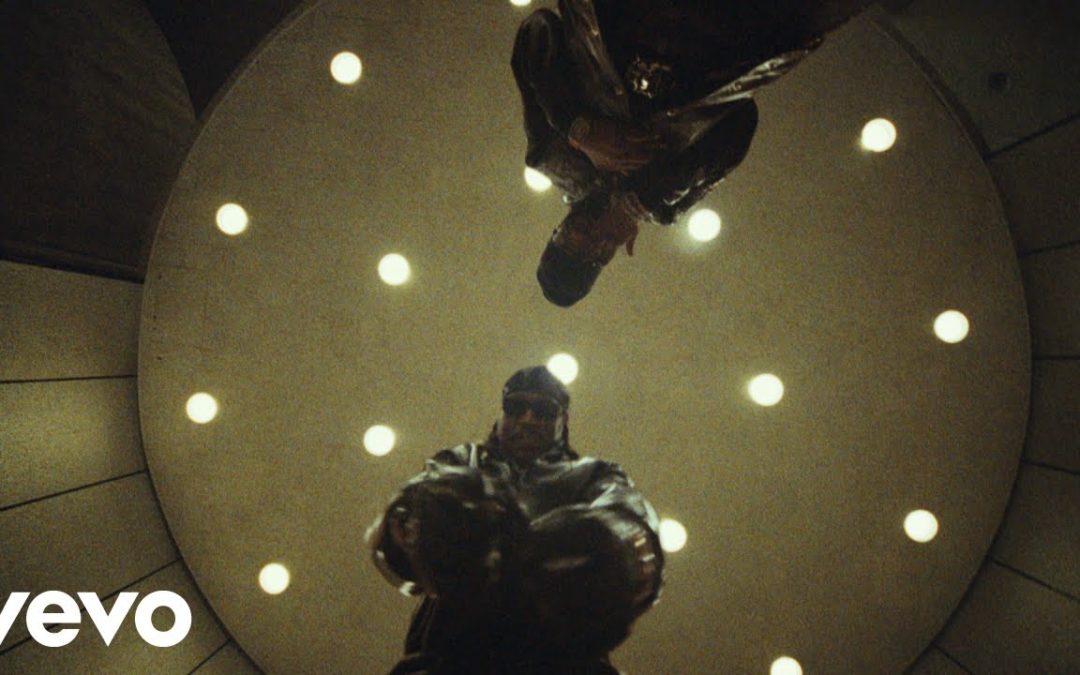
by Jonathan P-Wright | Aug 30, 2024 | Latest, Music News, New Music Alert |
In the realm where sonic artistry meets visual grandeur, a triumvirate of titans – Future, Metro Boomin, and The Weeknd – have conspired to ignite a blaze that scorches the boundaries of creativity. Their latest offering, the “Young Metro” visual, is a testament to the inextricable bond forged between these luminaries, a bond that traces its origins back to the formative days of their respective careers.
Metro Boomin, the beatsmith extraordinaire, recounted the serendipitous beginnings of his alliance with Future during a candid interview with Red Bull Music Academy. His narrative unfolded like a well-crafted verse, revealing how a fortuitous exchange of beats with his comrade Propain set the wheels in motion. Among those instrumental gems was the now-iconic “Karate Chop,” which would become a cornerstone in Future’s discography.
From those humble beginnings, a bond was forged – one that would transcend mere collaboration and evolve into a brotherhood of shared vision and unwavering artistic kinship.
Unleashing the Behemoth: “WE DON’T TRUST YOU” and Its Colossal Impact
As the embers of their partnership glowed brighter, Future and Metro Boomin channeled their synergy into a magnum opus – the colossal “WE DON’T TRUST YOU.” This seismic release, comprising a staggering 17 tracks, reverberated through the music cosmos like a supernova, its shockwaves amplified by the star power of heavyweights like Travis Scott, Rick Ross, Playboi Carti, and the inimitable Kendrick Lamar.
According to the prophetic whispers of Hits Daily Double, this audacious offering is poised to amass a staggering 190,000 to 220,000 album-equivalent units during its debut week, a testament to the insatiable appetite of fans for the sonic sustenance served by this dynamic duo.
But the story doesn’t end there. Like a cosmic echo, a sequel – “WE STILL DON’T TRUST YOU” – is already on the horizon, slated for an April 12 release, promising to further solidify Future and Metro Boomin’s dominance over the musical stratosphere.
The Weeknd’s Cameo: A Celestial Convergence
Amidst this celestial convergence of talent, a supernova of his own – The Weeknd – was destined to make a grand entrance. His appearance on the track “Young Metro,” a standout from the “WE DON’T TRUST YOU” opus, was a cosmic event in itself, his boastful chorus serving as the gravitational force that anchored the entire composition.
The Weeknd’s cameo, shrouded in mystique with a bandana obscuring his visage, added an enigmatic allure to the already electrifying visual spectacle.
The Cybertruck Invasion: A Futuristic Fusion of Sounds and Sights
In a location cloaked in secrecy, Future and Metro Boomin orchestrated a scene that defied convention and embraced the avant-garde. The pièce de résistance? A sleek, otherworldly Cybertruck, a fitting emblem of the duo’s relentless pursuit of innovation and their refusal to conform to the ordinary.
Amidst this futuristic backdrop, the two titans performed with a fervor that could ignite supernovas, their presence commanding the attention of a bevy of beauties who adorned the set like celestial bodies in orbit. It was a spectacle that transcended mere music, a fusion of sound and sight that left an indelible mark on the cosmos.
Blink-and-you’ll-miss-it cameos from luminaries like Don Toliver, Young Scooter, and others added to the star-studded tapestry, their fleeting appearances akin to shooting stars streaking across the night sky.
The Visual Architects: Hidji World and Omar Jones
Behind the lens of this cosmic masterpiece were the visionary talents of Hidji World and Omar Jones, whose artistry in crafting the “Young Metro” visual was akin to sculpting galaxies from stardust. Their collaborative prowess imbued the clip with a sense of grandeur and otherworldliness, elevating it from a mere music video to a cinematic odyssey.
Through their lens, the boundaries between reality and fantasy blurred, creating a realm where the extraordinary became the norm, and the impossible was merely a canvas waiting to be painted with the vibrant hues of their imagination.
The Stratospheric Ascent: Charting the Course of a Meteoric Rise
As the “Young Metro” visual ignites a firestorm of excitement across the music cosmos, it serves as a harbinger of the meteoric ascent that Future, Metro Boomin, and The Weeknd have embarked upon. Their trajectories, once separate celestial bodies, have now converged into a singular, blinding supernova, a force of nature that threatens to consume all in its path.
With each artistic endeavor, they continue to push the boundaries of what is possible, shattering conventions and redefining the very essence of creativity. Their impact reverberates far beyond the confines of the music industry, transcending genres and mediums, inspiring a generation of dreamers and risk-takers to embrace their own unique visions.
The Celestial Tapestry: Weaving Tales of Triumph and Resilience
Beneath the glitz and glamour of their meteoric success lies a tapestry of tales woven from the threads of triumph and resilience. Each artist has navigated their own treacherous journey, overcoming obstacles and defying the odds to carve their names into the annals of musical history.
Future’s ascent from the streets of Atlanta to the pinnacle of hip-hop royalty is a narrative that resonates with those who dare to dream. His lyrical prowess and unwavering authenticity have galvanized a legion of fans, each verse a testament to the power of perseverance and the indomitable human spirit.
Metro Boomin, the architect of soundscapes that have defined an era, has risen from humble beginnings to become a sonic savant, his beats pulsating with the heartbeat of a generation. His story is a reminder that greatness often emerges from the most unexpected places, a clarion call to never underestimate the power of passion and dedication.
And The Weeknd, a enigmatic force whose soulful croons have captivated millions, has transcended the boundaries of genre and convention, his journey a testament to the transformative power of art and the resilience of the human spirit.
The Interstellar Embrace: Connecting Cultures and Generations
In the vast expanse of the music cosmos, Future, Metro Boomin, and The Weeknd have become more than mere artists – they are cultural ambassadors, their influence transcending borders and bridging generations. Their music is a universal language, a tapestry woven from the threads of diverse experiences, resonating with audiences across the globe.
Through their art, they have forged a connection that defies boundaries, uniting disparate cultures and ideologies in a shared celebration of creativity and self-expression. Their impact extends far beyond the realm of music, inspiring a generation to embrace their individuality and fearlessly pursue their passions.
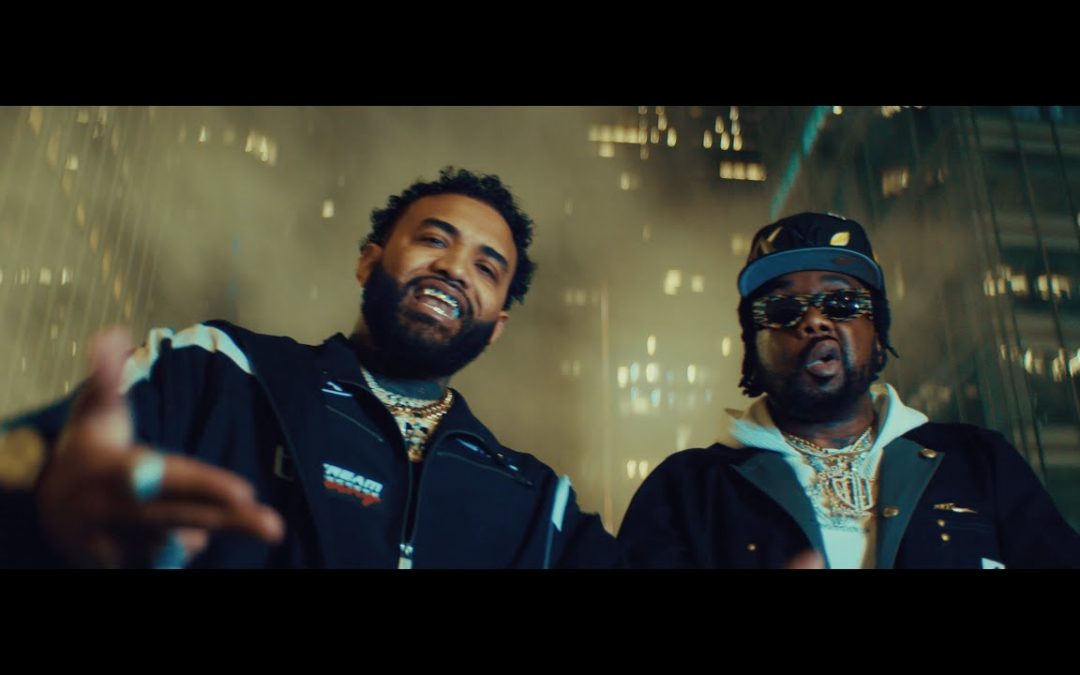
by Jonathan P-Wright | Aug 16, 2024 | Latest, Music News, New Music Alert |
VideoIn the latest display of his relentless creative prowess, Joyner Lucas has unveiled a hard-hitting new single titled “Sticks & Stones,” enlisting the formidable talents of Conway the Machine. This potent collaborative effort arrives accompanied by a visually striking music video that transports viewers to the heart of New York City’s iconic Times Square.
An Uncompromising Lyrical Onslaught
From the outset, “Sticks & Stones” pulls no punches, delivering an uncompromising lyrical onslaught that leaves a lasting impact. The track opens with a blistering verse from Conway the Machine, whose raw and unfiltered bars paint a vivid portrait of the harsh realities plaguing inner-city communities. His words resonate with a sense of urgency and authenticity, drawing listeners into a world where violence and desperation are inescapable truths.
A Cinematic Odyssey Through the Concrete Jungle
Complementing the hard-hitting lyrics is a visually captivating music video directed by Trevor Finney. The clip transports viewers to the heart of Times Square, where Joyner Lucas and Conway the Machine are seen mobbing with their respective crews, exuding an aura of defiance and authenticity.
The neon-drenched backdrop of Times Square serves as a fitting canvas for the artists’ raw and unapologetic narratives, juxtaposing the glitz and glamour of the city with the harsh realities they confront through their music. The video’s cinematography masterfully captures the energy and intensity of the track, immersing viewers in a cinematic odyssey through the concrete jungle.
Continuing a Legacy of Fearless Storytelling
For Joyner Lucas, “Sticks & Stones” represents another chapter in his ongoing legacy of fearless storytelling and uncompromising artistic expression. The track follows a series of powerful releases over the past year, including “24 hours to live,” “Devil’s Work 2,” “Blackout” with Future, “What’s That?,” “Cut U Off” with NBA YoungBoy, “Broski,” and “Seventeen.”
These diverse offerings have solidified Lucas’ reputation as a versatile and multifaceted artist, capable of seamlessly navigating various genres and themes while maintaining a distinct and unmistakable voice.
A Highly Anticipated Album on the Horizon
Fans of Joyner Lucas can anticipate the inclusion of “Sticks & Stones” and the aforementioned tracks on his highly anticipated forthcoming album, “Not Now, I’m Busy.” Teasing the project in March 2023, Lucas described it as an immersive audio experience akin to a cinematic journey.
“It’s like an audio movie. It’s an experience, and when you pop it in, you feel like you’re watching a movie. I really wanted to bring that to life,” the “Will” rapper explained to XXL. “Movies [are] my thing. If I can create my own movie, what kind of movie would I create? What would it look like? What would it sound like? What actors would be in it? That’s what this album is.”
With such a bold and ambitious vision, “Not Now, I’m Busy” promises to be a standout release in Joyner Lucas’ already impressive discography, further cementing his status as a premier storyteller and cultural commentator in the realm of hip-hop.
The Enduring Power of Raw Lyricism
In an era where hip-hop is often dominated by catchy hooks and radio-friendly beats, “Sticks & Stones” serves as a potent reminder of the enduring power of raw, unfiltered lyricism. Both Joyner Lucas and Conway the Machine deliver verses that resonate with a visceral authenticity, refusing to shy away from the harsh truths and grim realities that shape their respective narratives.
This unapologetic approach to storytelling has long been a hallmark of the two artists’ careers, earning them a dedicated following among fans who crave honesty and substance over fleeting trends and commercial compromises.
A Collaborative Tour de Force
Beyond its lyrical prowess, “Sticks & Stones” also stands as a testament to the power of collaboration within the hip-hop community. By joining forces, Joyner Lucas and Conway the Machine have created a sonic tapestry that amplifies their individual strengths while forging a cohesive and impactful artistic statement.
The chemistry between the two artists is palpable, with their contrasting yet complementary styles seamlessly intertwining to create a dynamic and multifaceted listening experience. This collaborative effort not only showcases their respective talents but also highlights the rich diversity and creative potential that exists within the hip-hop genre.
Embracing the Gritty Realities of Urban Life
One of the most striking aspects of “Sticks & Stones” is its unflinching portrayal of the harsh realities that pervade urban environments. Through their lyrics, Joyner Lucas and Conway the Machine shed light on the struggles, violence, and despair that often go unseen or overlooked by mainstream society.
Their words serve as a powerful reminder of the resilience and perseverance required to navigate these treacherous landscapes, resonating with audiences who have experienced similar hardships firsthand. By giving voice to these oft-marginalized narratives, the artists contribute to a broader cultural dialogue, challenging listeners to confront uncomfortable truths and seek meaningful change.
Pushing the Boundaries of Artistic Expression
In the ever-evolving landscape of hip-hop, “Sticks & Stones” stands as a testament to the genre’s ability to push the boundaries of artistic expression. Joyner Lucas and Conway the Machine have crafted a work that defies conventional expectations, blending raw lyricism, cinematic visuals, and uncompromising social commentary into a potent artistic statement.
By refusing to adhere to industry norms or cater to mainstream sensibilities, the artists have carved out a unique space for themselves, resonating with audiences who crave authenticity and depth over fleeting trends and commercial compromises.
A Celebration of Nonconformity and Individuality
At its core, “Sticks & Stones” is a celebration of nonconformity and individuality – two values that have long been central to the ethos of hip-hop culture. Joyner Lucas and Conway the Machine’s unwavering commitment to their artistic visions and unapologetic storytelling serves as an inspiration to aspiring creatives and music enthusiasts alike.
Through their music, they challenge listeners to embrace their own unique perspectives and lived experiences, rejecting societal pressures to conform or dilute their narratives. This defiant spirit resonates with a generation seeking to forge their own paths and assert their identities in an increasingly homogenized cultural landscape.
In a world where authenticity and raw expression often take a backseat to commercial considerations, “Sticks & Stones” stands as a timely and resonant artistic statement. Joyner Lucas and Conway the Machine have crafted a work that fearlessly confronts societal ills, celebrates nonconformity, and pushes the boundaries of artistic expression.

by Jonathan P-Wright | Aug 2, 2024 | Latest, Music News, New Music Alert |
Image credit: April Visuals / Shutterstock.com
VentureIn an intriguing revelation, the esteemed rapper Lupe Fiasco has unveiled plans to resurrect his once-envisioned musical collective, Child Rebel Soldier. However, this resurgence takes an unexpected turn, deviating from the initial collaborative concept to become a solitary endeavor.
During a candid exchange with Stereogum, Fiasco reminisced about the group’s origins, which initially encompassed himself, Pharrell Williams, and Kanye West. He elucidated how the formation of this trio catalyzed his penchant for seamlessly blending rap verses with the ethereal soundscapes of Radiohead’s music.
The Genesis: Lupe’s Radiohead-Infused Rap Vision
According to Fiasco’s recollections, the inception of Child Rebel Soldier stemmed from a singular idea – his desire to juxtapose lyrics ruminating on the perils of fame with the hauntingly beautiful melodies of “ethereal ass Radiohead beats.” This unconventional fusion piqued the interest of fellow musical luminaries Kanye West and Pharrell Williams, ultimately leading to their collaborative efforts.
Despite the initial enthusiasm and creative synergy, the collective’s aspirations remained largely unfulfilled. Their collaborative output was limited to a handful of tracks, including “Us (Placers),” “Don’t Stop!,” and “Everybody Noze (Remix).” The promise of a full-length album, once hinted at by Fiasco in a 2007 interview with Billboard, ultimately faded into obscurity, with the rapper confirming the project’s cancellation in 2013.
Undeterred by the collective’s fleeting existence, Fiasco now envisions a renaissance for Child Rebel Soldier, albeit in a radically different form. This time, the project will manifest as a solo endeavor, with Fiasco returning to his roots – crafting lyrical tapestries over the ethereal sonic landscapes of Radiohead’s discography.
In his own words, Fiasco articulated his intent to “reboot CRS in the next six months, maybe next year.” He elaborated, “Tyler, [The Creator] has one of the CRS records. But it’s gonna go back to the original energy, which was me rapping over Radiohead beats.”
Embracing the Unconventional: Sampling, Lawsuits, and Artistic Freedom
Fiasco’s resolute commitment to this artistic vision extends beyond mere creative expression. He acknowledges the potential legal ramifications of sampling Radiohead’s music, yet remains undaunted, declaring his willingness to “get sued for it, and keep it moving.”
His plans encompass releasing either “loosie freestyle shit or a proper tape,” an approach that encapsulates the essence of artistic freedom and a willingness to embrace the unconventional.
A Retrospective Glance: The Collective’s Fleeting Existence
To fully comprehend the significance of this resurgence, it is essential to revisit the collective’s origins and its short-lived existence. Despite the initial fervor surrounding Child Rebel Soldier in the late 2000s, the group’s collaborative efforts were short-lived.
Beyond the aforementioned trio of tracks, the collective’s output remained elusive, with Fiasco hinting at the possibility of a full-length album in his 2007 interview with Billboard. However, these aspirations ultimately dissipated, culminating in Fiasco’s 2013 tweet confirming the cancellation of the group’s plans.
Fiasco’s decision to revive Child Rebel Soldier as a solo venture marks a significant artistic evolution. While the initial concept revolved around a collaborative fusion of diverse talents, the reboot embraces a more introspective and personal approach.
By immersing himself in the sonic landscapes of Radiohead’s discography, Fiasco aims to forge a unique artistic expression that seamlessly blends his lyrical prowess with the band’s atmospheric and emotionally resonant compositions.
Embracing Risks: Legal Implications and Artistic Integrity
One of the most intriguing aspects of Fiasco’s plans is his willingness to embrace potential legal risks associated with sampling Radiohead’s music. His candid admission of being prepared to “get sued for it, and keep it moving” underscores his unwavering commitment to artistic integrity.
This bold stance not only exemplifies Fiasco’s dedication to his craft but also highlights the complexities and challenges artists often face when navigating the intricate realms of intellectual property and sampling laws.
While the reboot of Child Rebel Soldier primarily envisions Fiasco as a solitary force, he has hinted at the involvement of fellow artistic luminary Tyler, The Creator. According to Fiasco, Tyler already possesses one of the records slated for inclusion in this revived project.
This unexpected collaboration adds an intriguing layer to the narrative, suggesting that while Child Rebel Soldier may no longer exist as a traditional collective, its spirit of cross-pollination and artistic synergy remains intact.
Regardless of the outcome of this ambitious endeavor, Lupe Fiasco’s decision to revive Child Rebel Soldier solidifies his status as an artist unafraid to challenge conventions and push creative boundaries.
His willingness to embrace unconventional sonic fusions, coupled with his lyrical prowess and unwavering artistic vision, has cemented his place as a influential figure in the realm of hip-hop and contemporary music.
Anticipation Builds: Fans Eagerly Await the Rebirth
As news of Fiasco’s plans to resurrect Child Rebel Soldier as a solo project spreads, a palpable sense of anticipation permeates the air. Fans and music enthusiasts alike eagerly await the manifestation of this audacious artistic vision, curious to witness the seamless fusion of Fiasco’s lyrical narratives with the ethereal sonic tapestries of Radiohead’s discography.
The prospect of Fiasco’s willingness to embrace potential legal entanglements only adds to the intrigue, underscoring his unwavering commitment to artistic authenticity and his refusal to compromise his creative vision.
Conclusion: A Bold New Chapter in Lupe Fiasco’s Musical Odyssey
In a bold and unexpected move, Lupe Fiasco has chosen to revive the once-collaborative Child Rebel Soldier project as a solo endeavor, marking a new chapter in his illustrious musical odyssey. By fusing his lyrical prowess with the atmospheric soundscapes of Radiohead’s discography, Fiasco aims to forge a unique artistic expression that transcends conventional boundaries.
While the path ahead may be fraught with legal complexities and challenges, Fiasco’s resolute determination to embrace risks and uphold artistic integrity is a testament to his unwavering commitment to his craft. As fans eagerly await the manifestation of this ambitious undertaking, one thing remains certain: Lupe Fiasco’s unwavering pursuit of creative excellence will undoubtedly leave an indelible mark on the musical landscape.
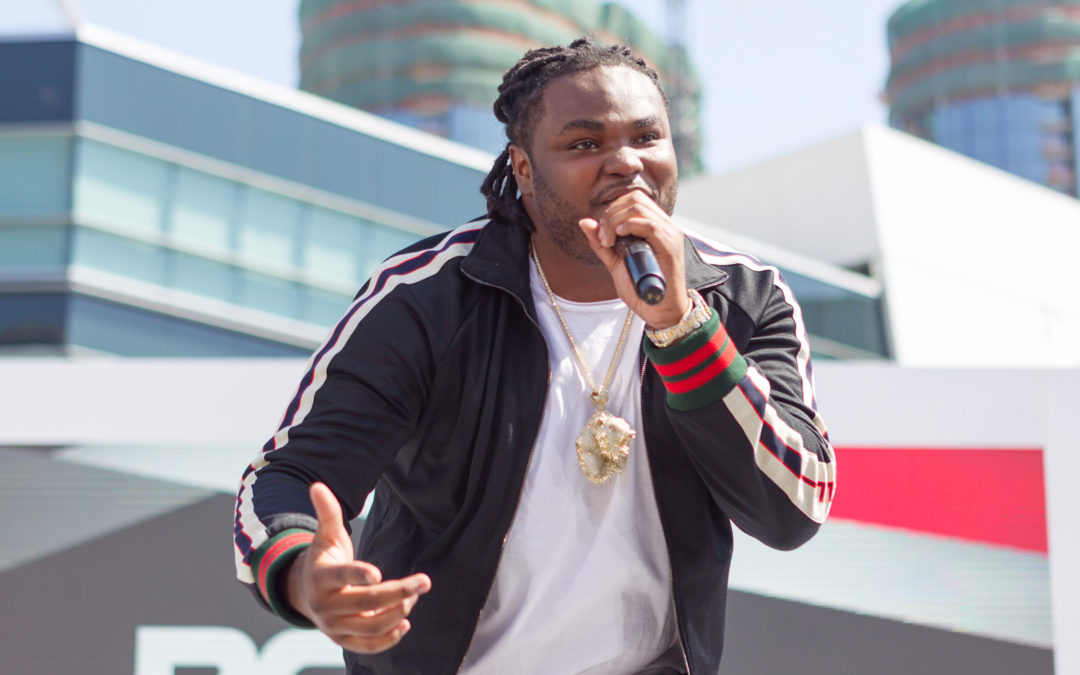
by Laghe Andrews | May 15, 2024 | Uncategorized |
Image credit: Jamie Lamor Thompson / Shutterstock.com
Tee Grizzley has joined forces with Future, the Atlanta-based hip-hop juggernaut, to deliver a scintillating new track titled “Swear to God.” Accompanied by an equally captivating official music video, this collaborative effort showcases the undeniable chemistry between the two artists as they trade verses brimming with uncompromising lyricism and unapologetic swagger.
The Lyrical Onslaught
From the outset, “Swear to God” establishes itself as a lyrical tour de force, with Future and Tee Grizzley leaving no stone unturned in their pursuit of asserting their dominance over their peers and adversaries. Future, known for his unfiltered and unapologetic delivery, sets the tone with his opening salvo, proclaiming his unrivaled status in the game with the lines:
“Fuck your album, shit ain’t slappin’ like my mixtape (Fuck your album) / I’m gettin’ Saudi Arabia money, servin’ oil-based (What’s happenin’?) / Rob a rapper and say my name, get his chain back (Pluto) / My bitch cheat on me, I find out, get her chain snatched (Woo).”
Tee Grizzley, hailing from the unforgiving streets of Detroit, matches Future’s intensity with his fiery verse, showcasing his unwavering hustle and relentless pursuit of success:
The Visual Spectacle
The official music video for “Swear to God” is a feast for the senses, transporting viewers to the vibrant and opulent locales of Miami. Future and Tee Grizzley are seen indulging in the finer things in life, hitting up a lavish jewelry store and the upscale Kiki on the River restaurant. The visuals perfectly complement the unapologetic lyrics, painting a vivid picture of the extravagant lifestyles these artists have carved out for themselves through their unwavering dedication and hard work.
Fans’ Reactions and Anticipation
Since its release on Friday, “Swear to God” has been met with an overwhelmingly positive response from fans, who have praised the track’s raw energy and the undeniable chemistry between Future and Tee Grizzley. However, many were left yearning for more, as Future had teased the possibility of a new mixtape release, using his “Mixtape Pluto” alias and the “Fuck your album” line from the collaboration.
While the highly anticipated mixtape failed to materialize on Friday, leaving fans momentarily disappointed, the release of “Swear to God” has undoubtedly whetted their appetites for more music from these two powerhouse artists.
The Rise of Tee Grizzley
Tee Grizzley’s journey from the streets of Detroit to the forefront of the hip-hop scene has been nothing short of remarkable. With his gritty lyricism and unflinching honesty, he has quickly garnered a devoted following and critical acclaim for his ability to translate the harsh realities of his upbringing into raw, authentic music.
Collaborating with an artist of Future’s caliber is a testament to Tee Grizzley’s rapidly ascending status within the industry, and “Swear to God” serves as a powerful reminder of his undeniable talent and unwavering determination.
Future’s Continued Dominance
Future, on the other hand, has long cemented his position as one of the most influential and prolific artists in the hip-hop realm. With a discography that spans numerous chart-topping albums and mixtapes, he has consistently pushed the boundaries of the genre, blending innovative production with his distinctive style and uncompromising lyrics.
By joining forces with Tee Grizzley on “Swear to God,” Future once again demonstrates his ability to seamlessly blend his artistry with that of rising talents, creating a dynamic synergy that resonates with fans across the board.
The Power of Collaboration
In an industry where competition is fierce and egos often clash, the collaboration between Tee Grizzley and Future stands as a shining example of the power of unity and mutual respect. By combining their unique perspectives and distinct styles, these two artists have crafted a track that not only showcases their individual talents but also highlights the incredible potential that can be unlocked through collaborative efforts.
“Swear to God” serves as a reminder that true artistry knows no boundaries, and when talents collide, the result can be nothing short of extraordinary.
The Enduring Appeal of Authentic Storytelling
At the heart of “Swear to God” lies a raw and unapologetic narrative that resonates with listeners on a profound level. Both Tee Grizzley and Future have built their careers on their ability to translate their lived experiences into powerful lyrics, painting vivid portraits of the harsh realities they’ve faced and the triumphs they’ve achieved.
In an age where authenticity is often overshadowed by manufactured personas and carefully curated images, the success of “Swear to God” serves as a testament to the enduring appeal of genuine storytelling and the power of artists who refuse to compromise their truth.
The Evolution of Hip-Hop
The release of “Swear to God” also serves as a reminder of the ever-evolving nature of the hip-hop genre. As new voices emerge and established artists continue to push boundaries, the genre remains a dynamic and constantly shifting landscape, embracing a diverse range of styles and perspectives.
Tee Grizzley and Future’s collaboration represents the seamless fusion of two distinct voices, each contributing their unique flavor to the mix, resulting in a track that defies conventional boundaries and challenges listeners to expand their horizons.
The Importance of Artistic Expression
In a world where societal pressures and external influences often threaten to stifle artistic expression, the unapologetic nature of “Swear to God” serves as a powerful reminder of the importance of staying true to one’s artistic vision. Both Tee Grizzley and Future have built their careers on their unwavering commitment to authenticity, refusing to compromise their artistic integrity for the sake of commercial success.
Through their collaboration, they have not only created a powerful musical statement but have also reinforced the notion that true art is born from a place of uncompromising self-expression, a sentiment that resonates with artists and audiences alike.
The Power of Perseverance
Tee Grizzley’s journey from the streets of Detroit to the heights of the music industry is a testament to the power of perseverance and unwavering determination. Despite the numerous obstacles and challenges he faced along the way, he remained steadfast in his pursuit of his dreams, channeling his experiences into his music and using his voice as a catalyst for change.
By collaborating with Future, an artist who has similarly overcome adversity and risen to the top of the hip-hop hierarchy, Tee Grizzley not only solidifies his place among the genre’s elite but also serves as an inspiration to countless others who aspire to turn their struggles into success stories.
The Enduring Legacy of “Swear to God”
While the impact of “Swear to God” on the music industry and popular culture remains to be seen, one thing is certain: this collaboration between Tee Grizzley and Future has already etched its place in the annals of hip-hop history. The raw energy, unapologetic lyricism, and undeniable chemistry between the two artists have created a track that will resonate with listeners for years to come.
As the genre continues to evolve and new voices emerge, “Swear to God” will stand as a testament to the power of authentic storytelling, the importance of artistic expression, and the enduring appeal of music that speaks to the human experience in all its complexities.
In the end, “Swear to God” is more than just a song; it’s a cultural artifact that captures the essence of a moment in time, a reflection of the struggles, triumphs, and unwavering spirit that define the hip-hop community. And for that reason alone, it deserves a place in the annals of music history.






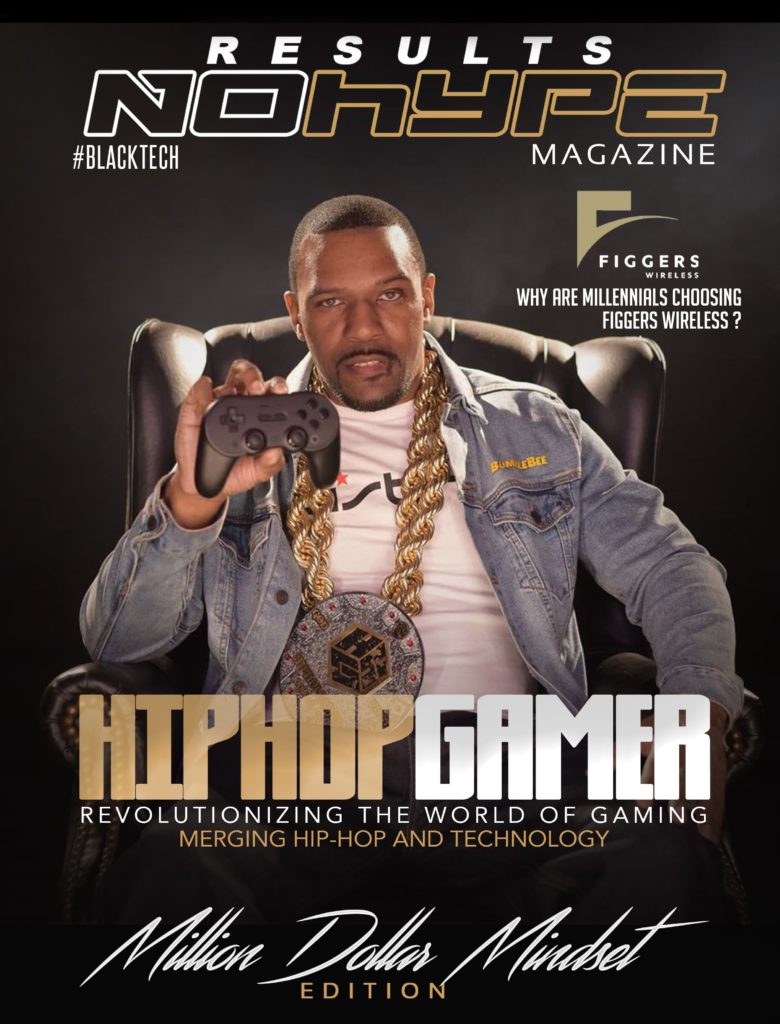
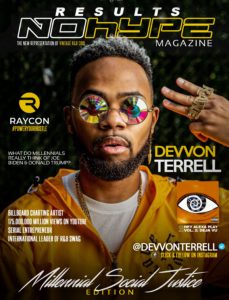
RECENT COMMENTS